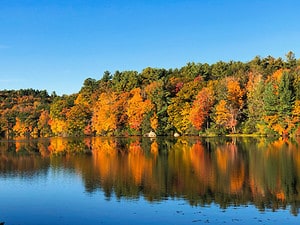Volcanologists have no set rules for defining an “active” volcano. Volcanoes can last anywhere from a few months to a few million years, which makes the difference between them and human lifespans sometimes useless. For example, many of Earth’s volcanoes have erupted dozens of times in the last few thousand years but are not showing signs of doing so now.
Volcanoes are considered very active because they last a long time, but they are not so active compared to human lives. Scientists usually say that a volcano is erupting or likely to erupt if it is currently erupting or showing signs that it may erupt, such as unusual earthquake activity or significant new gas emissions.
Most experts believe a volcano is active if it has erupted in the last 10,000 years. This is the definition used by the Smithsonian Global Volcanism Program. As of March 2021, 1,350 active volcanoes that have erupted during the Holocene Epoch are recognized by the Program.
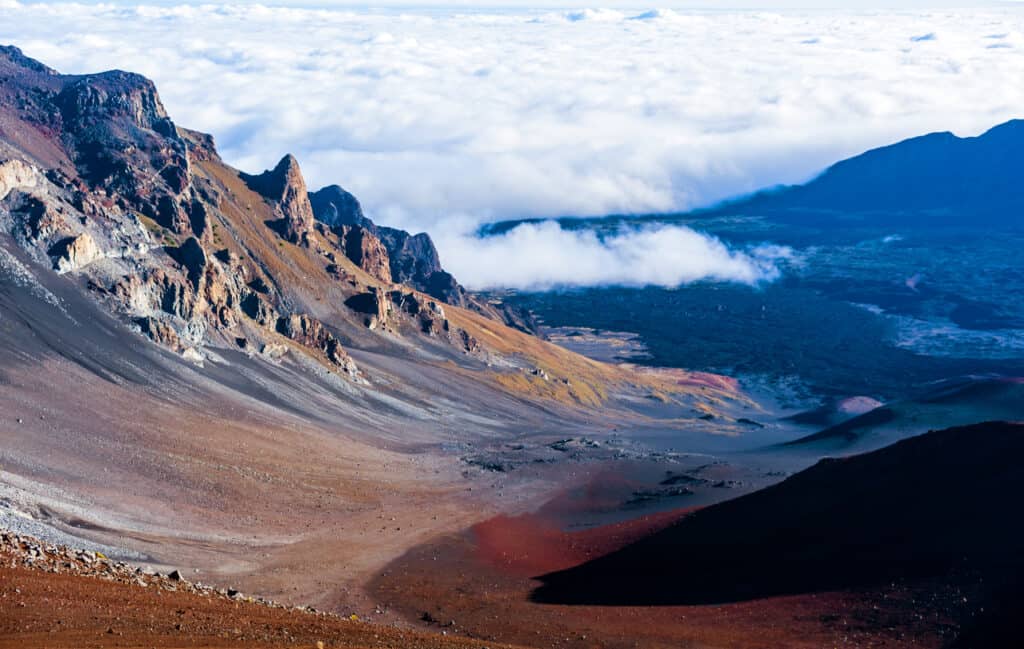
View of the Haleakalā volcano summit , island of Maui, Hawaii
©iStock.com/sphraner
How many are there?
Aside from the continuous belts of volcanoes on the ocean floor, like the Mid-Atlantic Ridge, there are about 1,350 volcanoes that could be active around the world. About 500 of these 1,350 volcanoes have erupted in recorded history. Many of them are located in the “Ring of Fire” along the Pacific Rim.
Volcanoes in the Cascade Range and the Aleutian volcanic chain in Alaska are part of the Ring. Volcanoes in Hawaii form over a “hot spot” near the center of the Ring. In the United States and its territories, 161 volcanoes could erupt. About 90% of all earthquakes happen along the Ring of Fire, and 75% of all active volcanoes on Earth are in this area.

Shishaldin is the tallest volcano located in Alaska.
©NOAA Photo Library / flickr – License
What created the Ring of Fire
Plate tectonics is what made the Ring of Fire. Tectonic plates are like big rafts on the surface of the Earth. They often slide next to each other, crash into each other, and get pushed under each other. The Pacific Plate is quite extensive, so it is surrounded by other big and small plates with which it interacts.
The Pacific Plate movements and the other tectonic plates around it create a lot of energy, which makes it easy to turn rocks into magma. The lava from this magma then rises to the surface and forms volcanoes.
Dangerous active volcanoes
There are typically 50 to 70 volcanoes that erupt each year. Some of them experience repeated eruptions, while others only do so once. There are a few active volcanoes around the world that are considered to be dangerous.
These volcanoes have the potential to cause serious destruction, so it’s essential to be aware of their activity levels. Some of the world’s most hazardous active volcanoes include the following:
- Mount Vesuvius, Italy: This volcano is well-known for its devastating eruption in 79 CE that destroyed the city of Pompeii. Due to its proximity to populated regions, it is one of the most dangerous volcanoes in the world.
- Krakatoa, Indonesia: Infamous for its catastrophic eruption in 1883, which killed over 36,000 people. The explosion produced a wave that wiped out 165 coastal villages and could be heard 1,930 miles away.
- Mount St. Helen: It is dangerous because It is an active volcano that is capable of erupting. It has already erupted several times in the past, most recently in 1980, and could potentially erupt again in the future. This could cause devastating damage to nearby communities.
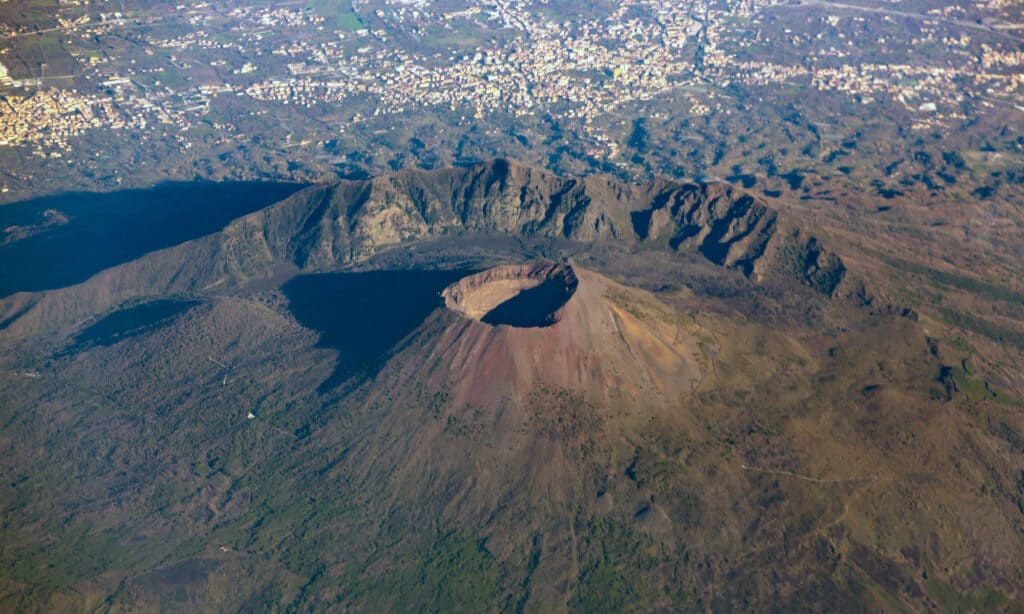
Mount Vesuvius is well-known for its devastating eruption in 79 CE that destroyed the city of Pompeii.
©iStock.com/Cylonphoto
What are inactive volcanoes?
The term “dormant volcano” or “inactive” describes a volcano that hasn’t erupted in a very long time but is still capable of doing so and will likely do so in the future. Definitions also become complex in this case since it is impossible to tell the difference between a volcano that is currently dormant and one that will remain dormant. A Holocene volcano has erupted within the last 10,000 or so years.
If there are no records of a volcano’s activity, it is frequently assumed that it is extinct. However, volcanoes might be inactive for a very long time. For instance, before their historic and catastrophic eruptions, the volcanoes of Toba and Vesuvius were all believed to be extinct. It seems unlikely that extinct volcanoes will erupt in the near future.
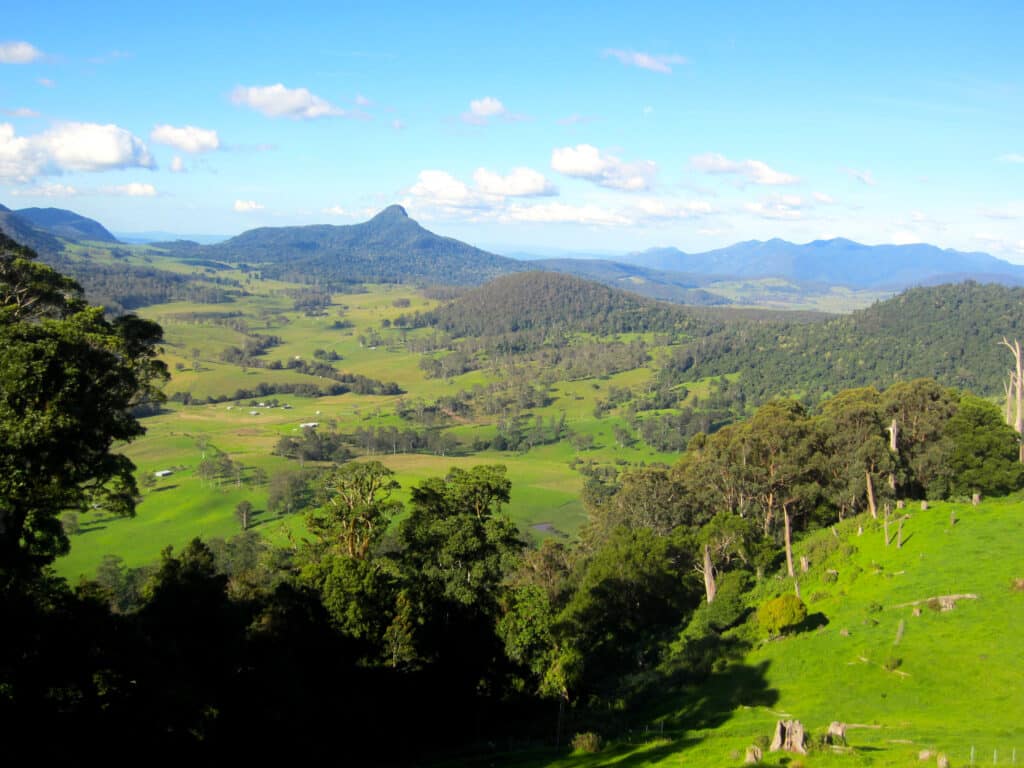
Inactive Tweed Volcano in the distance.
©Jen Petrie/Shutterstock.com
| Countries With the Most Holocene Volcanoes | Number Holocene Volcanos |
|---|---|
| The United States | 162 |
| Japan | 122 |
| Indonesia | 121 |
| Russia | 117 |
| Chile | 91 |
| Ethiopia | 53 |
| Papua new guinea | 46 |
| Philippines | 38 |
| Mexico | 37 |
| Argentina | 35 |
| Iceland | 35 |
| Ecuador | 35 |
| Canada | 24 |
| New Zealand | 24 |
| Guatemala | 23 |
| Tonga | 21 |
| Kenya | 21 |
| El Salvador | 20 |
| Antarctica | 19 |
| France | 19 |
Effects of Volcanic Eruptions
Volcanoes erupt with a destructive mixture of ash, toxic gasses, lava, and rock. Explosions from volcanoes have claimed many lives. They can cause additional health risks such as mudslides, electricity outages, and contaminated drinking water.
Infectious diseases, respiratory disorders, burns, and car accidents resulting from ash-induced haze are some physical issues that might arise after a volcanic eruption. A volcanic eruption’s likelihood of adverse health repercussions is minimal when warnings are heeded.

Volcanoes erupt with a destructive mixture of ash, toxic gasses, lava, and rock.
©Darkimages08 / Creative Commons – License
Long Term Effects
Not all volcanic activity is destructive. The oceans, atmosphere, and continents have all evolved thanks to volcanic processes over geologic time. A lava flow might cover and bury the land, but new soil and vegetation always grow back.
In warm, humid climates, the recovery process is quick—a few decades is all it takes to hide the rocky surface of solidified lava flows. But recovery is slower in desert or Arctic climates; flows more than 1,000 years old might still look just as barren. Volcanic ash slowly turns into rich, loamy soils over time.
What is Volcanic Winter?
Volcanic winter is when large amounts of volcanic ash and sulfur aerosols fall from the sky and cool the surface of the Earth. Aerosols made of sulfur reflect incoming solar radiation and take in radiation from the ground.
All of these things work together to cool the troposphere. If the amount of sulfur aerosols is high enough, it can change the climate on a global scale for years after the event. This can cause crop failures, cooler temperatures, and weather that isn’t normal all over the planet.
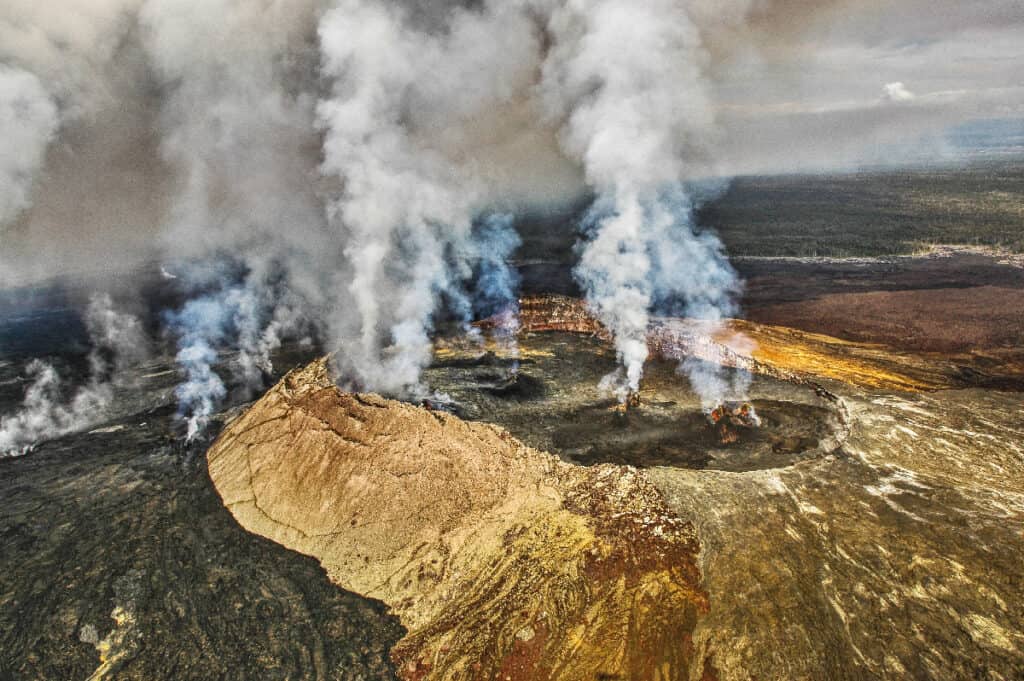
Kīlauea has been erupting since September 2021 and is the most active volcano in the world.
©iStock.com/Vito Palmisano
Conclusion
There are currently over 1,000 active volcanoes around the world. However, this number is constantly changing as some volcanoes become inactive while others become active. While most volcanoes are found on land, there are also underwater volcanoes.
These are usually found near the boundaries of tectonic plates, where magma can rise from the Earth’s mantle and erupt through the water. Volcanoes are dangerous but also play an essential role in the Earth’s geology. They can create new land, help to regulate the Earth’s temperature, and even make the ground more fertile so plants can thrive.
There is no doubt that it sounds scary that over 50 volcanoes erupt each year, but there aren’t as many casualties from them due to advancements in predicting them and evacuating people. Check out our other articles on volcanoes to learn even more.
Up Next:
- How Many Volcanoes Are In The World?
- 8 Extinct Volcanoes from Across the World
- The Most Dangerous Volcanoes on Earth, Where Are They?
- The 2 Largest Underwater Volcanoes on Earth (And if They’re Ready To Blow)
The photo featured at the top of this post is © Thorir Ingvarsson/Shutterstock.com
Sources
- USGS.gov, Available here: https://www.usgs.gov/faqs/how-many-active-volcanoes-are-there-earth#:~:text=There%20are%20about%201%2C350%20potentially,like%20the%20Mid%2DAtlantic%20Ridge.
- Smithsonian Institution National Museum of Natural History Global Volcanism Program, Available here: https://volcano.si.edu/faq/index.cfm?question=countries
- , Available here: https://en.wikipedia.org/wiki/Ring_of_Fire
- USGS.gov, Available here: https://www.usgs.gov/faqs/what-ring-fire
FAQs (Frequently Asked Questions)
How many active volcanoes are there?
There are currently over 1,000 active volcanoes around the world. However, this number is constantly changing as some volcanoes become inactive while others become active. While most volcanoes are found on land, there are also underwater volcanoes.
What is an inactive volcano?
The term “dormant volcano” or “inactive” describes a volcano that hasn’t erupted in a very long time but is still capable of doing so and will likely do so in the future. Definitions also become complex in this case since it is impossible to tell the difference between a volcano that is currently dormant and one that will remain dormant. A Holocene volcano has erupted within the last 10,000 or so years.
Thank you for reading! Have some feedback for us? Contact the AZ Animals editorial team.





